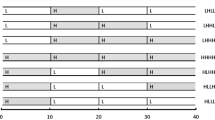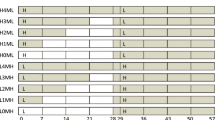Abstract
An understanding of nitrogen mineralization from residues and soil organic matter is important to understand the quantity of N available from the soil for crop production. The objective of this study was to determine effects of repeated wetting and drying of soils on rates of N mineralization. The study compared mineralization rates in three kaolinitic, low organic matter soils, utilizing cotton leaves or compost as residues. One set of treatments was subjected to repeated drying and rewetting, whereas the other was kept at constant moisture content. Mineralized N was measured by leaching with 0.01 M CaCl2 periodically, for 185 days. Rates of C mineralization were measured in the treatment containers by periodic measurement of CO2 respiration rates. In constant moisture conditions, soils with cotton leaf residue mineralized between 25% and 40% of N applied as residue, whereas soils with compost mineralized between 3.8% and 9.3%. In fluctuating moisture conditions, soils with cotton leaf residue mineralized between −1.3% and 6.9%, whereas soils with compost mineralized from 1.6% to 3.3%. Moisture effect was not significant in soils without residue, with soils mineralizing between 16 and 47 mg N kg–1. Carbon mineralization rates were not significantly affected by moisture. Both residue and soil type affected rates of C mineralization.
Similar content being viewed by others
References
Baldwin D.S. and Mitchell A.M. 2000. The effects of drying and re-flooding on the sediment and soil nutrient dynamics of lowland river-floodplain systems: a synthesis. Regulated Rivers: Res. Manage. 16: 457-467.
Birch H.F. 1958. The effect of soil drying on humus decomposition and nitrogen availability. Plant Soil 10: 9-31.
Birch H.F. 1960. Nitrification in soils after different periods of dryness. Plant Soil 12: 81-96.
Birch H.F. 1964. Mineralization of plant nitrogen following alternate wet and dry conditions. Plant Soil 20: 43-49.
Cabrera M.L. 1993. Modeling the flush of nitrogen mineralization caused by drying and rewetting soils. Soil Sci. Soc. Am. J. 57: 63-66.
Cabrera M.L. and Kissel D.E. 1988. Evaluation of a method to predict nitrogen mineralization from soil organic matter under field conditions. Soil Sci. Soc. Am. J. 52: 1027-1031.
Cabrera M.L., Chiang S.C., Merka W.C., Pancorbo O.C. and Thompson S.A. 1994. Nitrous oxide and carbon dioxide emissions from pelletized and nonpelletized poultry liter incorporated into soil. Plant Soil 163: 189-196.
Clarholm M. 1985. Interactions of bacteria, protozoa and plants leading to mineralization of soil nitrogen. Soil Biol. Biochem. 17: 181-187.
Crooke W.M. and Simpson W.E. 1971. Determination of ammonium Kjeldahl digest of crops by an automated procedure. J. Sci. Food Agric. 22: 9-10.
Curtin D., Selles F., Wang H., Campbell C.A. and Biederbeck V.O. 1998. Carbon dioxide emissions and transformation of soil carbon and nitrogen during wheat straw decomposition. Soil Sci. Soc. Am. J. 62: 1035-1041.
Das S.K., Reddy G.S., Sharma K.L., Vittal K.P.R., Venkateswarlu B., Reddy M.N. and Reddy Y.V.R. 1993. Prediction of nitrogen availability in soil after crop residue incorporation. Fert. Res. 34: 209-215.
Deans J.R., Molina J.A.E. and Clapp C.E. 1986. Models for predicting potentially mineralizable nitrogen and decomposition rate constants. Soil Sci. Soc. Am. J. 50: 323-326.
Egelkraut T.M., Kissel D.E. and Cabrera M.L. 2000. Effect of soil texture on nitrogen mineralized from cotton residues and compost. J. Env. Qual. 29: 1518-1522.
EPA 1984. Methods for chemical analysis of water and wastes. EPA-600/4-79-020. 'Nitrogen, Ammonia' Method 350.1 (Colorimetric, Automated Phenate) Storet No. Total 00610, Dissolved 00608, March 1984.
Fierer N. and Schimel J.P. 2002. Effects of drying-rewetting frequency on soil carbon and nitrogen transformations. Soil Biol. Biochem. 34: 777-787.
Franzluebbers K., Weaver R.W., Juo A.S.R. and Franzluebbers A.J. 1994. Carbon and nitrogen mineralization from cowpea plant parts decomposing in moist and repeatedly dried and wetted soil. Soil Biol. Biochem. 26: 1379-1387.
Kieft T.L., Soroker E. and Firestone M.K. 1987. Microbial biomass response to a rapid increase in water potential when dry soil is wetted. Soil Biol. Biochem. 19: 119-126.
Kirsten W. 1983. Organic Elemental Analysis: Ultramicro, Micro, and Trace methods. Academic Press, Harcourt Brace Jovanovich, New York.
Klute A. 1986. Water Retention, Laboratory methods. In: Physical and Mineralogical Methods. American Society of Agronomy, Madison, Wisconsin, USA, p. 643.
Kuikman P.J. and Van Veen J.A. 1989. The impact of protozoa on the availability of bacterial nitrogen to plants. Biol Fert. Soils 8: 13-18.
Kuikman P.J., Jansen A.G. and Van Veen J.A. 1991. 15N-Nitrogen mineralization from bacteria by protozoa grazing at different soil moisture regimes. Soil Biol. Biochem. 23: 193-200.
Kumar K. and Goh K.M. 2000. Crop residues and management practices: effects on soil quality, soil nitrogen dynamics, crop yield, and nitrogen recovery. Adv. Agron. 68: 197-319.
Lundquist E.J., Jackson L.E. and Scow K.M. 1999b. Wet-dry cycles affect dissolved organic carbon in two California agricultural soils. Soil Biol. Biochem. 31: 1031-1038.
McGrady-Steed J. and Morin P.J. 1996. Disturbance and the species composition of rain pool microbial communities. Oikos 76: 93-102.
Øien A., Olsen A.R.S., Bærug R. and Lyngstad I. 1974. Studies on soil nitrogen: Effects of drying, deep-freezing and storage of moist soil on nitrogen mineralization. Acta Agric. Scand. 24: 222-226.
Pamidi J., Goh K.M. and McLaren R.G. 2001. Comparison of three different methods of determining soil sulphur mineralization in relation to plant sulphur availability in soils. Biol. Fert. Soils 34: 131-139.
SAS Institute 1985. SAS User's Guide: Statistics. Version 6. SAS Institute, Inc., Cary, North Carolina, USA.
Seneviratne R. and Wild A. 1985. Effect of mild drying on the mineralization of soil nitrogen. Plant Soil 84: 175-179.
Stanford G. and Smith S.J. 1972. Nitrogen mineralization potentials of soils. Soil Sci. Soc. Am. Proc. 36: 465-472.
Stanford G. and Epstein E. 1974. Nitrogen mineralization-water relations in soils. Soil Sci. Soc. Am. Proc. 38: 103-107.
Stanford G., Frere M.H. and Schwaninger D.H. 1973. Temperature coefficient of soil nitrogen mineralization. Soil Sci. 115: 321-323.
Tyson S.C. and Cabrera M.L. 1993. Nitrogen mineralization in soils amended with composted and uncomposted poultry litter. Comm. Soil Sci. Plant Anal. 24: 2361-2374.
Author information
Authors and Affiliations
Rights and permissions
About this article
Cite this article
Kruse, J.S., Kissel, D.E. & Cabrera, M.L. Effects of drying and rewetting on carbon and nitrogen mineralization in soils and incorporated residues. Nutrient Cycling in Agroecosystems 69, 247–256 (2004). https://doi.org/10.1023/B:FRES.0000035197.57441.cd
Issue Date:
DOI: https://doi.org/10.1023/B:FRES.0000035197.57441.cd




